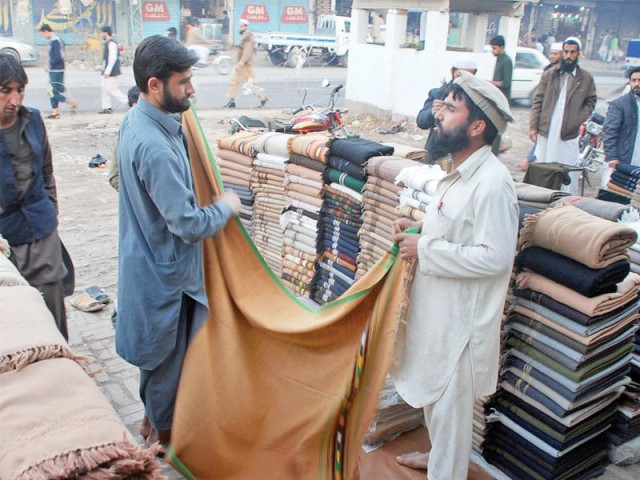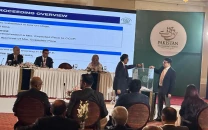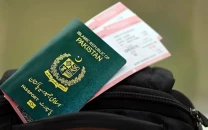Stay warm and carry on: Business turns cold as selling shawls becomes difficult
Militancy in K-P and Afghanistan has damaged culture and fashion.

In K-P, these shawls are made in Swat, Islampur, Rajar, Charsadda and in Matta, Shaqbadar. PHOTO: IQBAL MAMOND/EXPRESS
Continuous militancy in Khyber-Pakhtunkhwa and Afghanistan has damaged many aspects of life, including culture and fashion. People fear that security personnel will assume the worst and stop to check if they are carrying explosives and weapons. This causes major issues for shawl manufacturers especially since their sales have been going down in the last couple of years.
The chadar, saadar or shawl is a regular feature of Pukhtun clothing and is often referred to in poetry. According to poet and Adabi Tolana’s president, Hayat Iqbal, shawls are a part of Pukhtun culture. “Our poets talk about shawls in their poetry,” he said. “Shawls have been defamed by militancy. It has endangered our culture.”
Shawls are considered to be regional sweaters and are worn by men and women. In K-P, these shawls are made in Swat, Islampur, Rajar, Charsadda and in Matta, Shaqbadar. The Lahore woollen shawls are also popular in K-P.
Aziz Khan, a power loom owner in Matta, said that there are two types of loom – hand and power. Back in the day, hand looms were converted into power looms and since the process has become mechanised, power looms are more common. However, Aziz added that the trend fluctuates due to prolonged power shortages.
“Many loom owners had to quit the industry because of the electricity issue, high taxes and the difference in the demand and supply chain,” he said while talking to The Express Tribune.
According to Khan, one of the factors behind the decreasing demand was militancy. “If you are travelling in a bus or coach, the police will only search passengers wearing shawls,” he said. “In some areas, all passengers are searched if just one of them has a shawl wrapped around his shoulders.”
While discussing the industry’s loss, Khan said that there were about 100 power looms, but only 40 were operating. Each loom has about 10 to 30 workers and while the women work from home, there is not much employment opportunity.
Another factor contributing to decreased demand for shawls was that they are only exported to Afghanistan in winter and remain closed throughout the summer. He feared that labourers associated with manufacturing shawls indirectly would also lose their jobs.
According to Zahor Khan from the police department, they had been ordered to check anyone wearing a shawl on basis of suspicion.
Jamiat Ulema-e-Islam-Fazl’s Ifranullah claimed that when he went to submit his nomination papers for the 2008 elections, he was not allowed to enter the Election Commission of Pakistan building just because he had a shawl around his shoulders. He was allowed to enter once he removed the shawl. It is now banned to wear a shawl in K-P’s public offices, he added.
Published in The Express Tribune, December 10th, 2013.













COMMENTS
Comments are moderated and generally will be posted if they are on-topic and not abusive.
For more information, please see our Comments FAQ